At the close of last year, I received an invitation to look at the new “service compact” size pistol from Ruger – in caliber 380 Auto.
Why a gun that size in that caliber? For good reasons I’ll explore more deeply in another feature. For now, let it suffice to say that handgun handling issues unrelated to training/education/practice are in the “envelope” – size, weight, ergonomics, and handling. It makes a difference when the new (or health-challenged or elderly) shooter can’t hold the gun up, can’t reach the trigger and other controls, or are sensitive to recoil (and blast, to some extent).

When the release issued last year, I mentioned that “best of breed” had been the Ruger LC380 – a true double-action hammer fired auto. It’s a 7+1 (and ships with only one magazine), with a longer, heavier trigger (which is good on a threat management tool, if you practice). Some people will disregard it for that reason.
The lesson wasn’t lost on Smith and Wesson with its Shield EZ in 380 – nor was SIG unwilling to move this direction in the micro-compact P365-380. The 380 ACP can be a smart choice.
I’ll have folks from the self-defense side start quoting caliber zealots, but – in short – there’s little in the way of evidence to support their doctrine. There are anecdotes and those are often 2nd and 3rd hand.
It’s critical that the gun is reliable in ignition and function and it has to shoot to the sights.
Further, affiant sayeth naught.
The test began with a flying trip to the range. Being around 26° and foggy, there would be no chronograph (though that will follow at some point), little in the way of real accuracy testing and more just shooting to see if the gun works, if it hits the target somewhere and to get a feel for the handling characteristics important to the target consumer.
Here’s what I found.
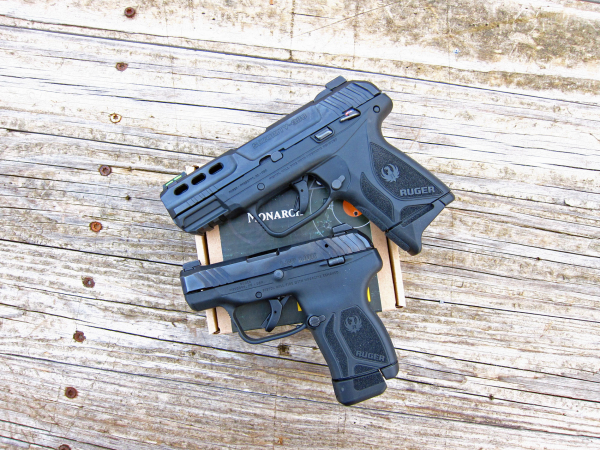
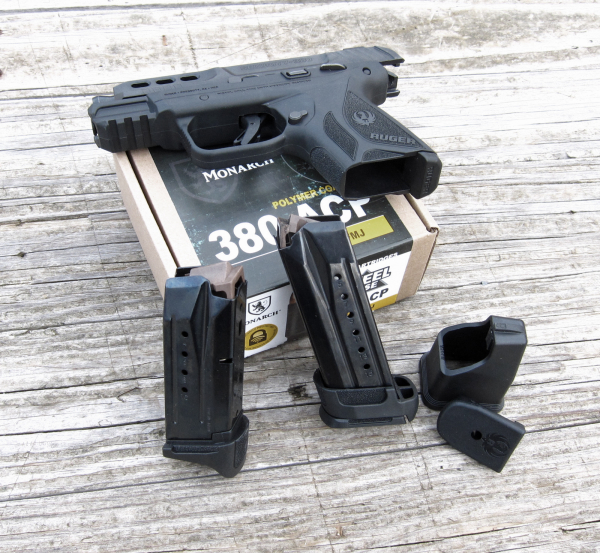
The slide is truly easy to manipulate, the recoil is very mild (I can’t really emphasize that enough). As opposed to a number of larger caliber guns reconfigured to take less powerful cartridges, there are no bumps, fits & starts or any disruption of the cycle of function. With some guns of this description, it’s like the slide travel is sluggish and hits a speed bump when going into battery.
Not with the Security 380 (and, coincidentally, not an LC380 that I had for T&E years ago – and foolishly let go back).
It’s a locked breech design; not all 380 Autos are that way. That helps take the ‘thump’ out of the firing sequence. Coincidentally, the LCP line is also a locked breech design or they’d be oppressive to shoot.
One thing I didn’t like about the LC380 (or the LC9) is the magazine disconnector. I didn’t think it was critical enough to turn away from the piece but it’s unneeded complexity.
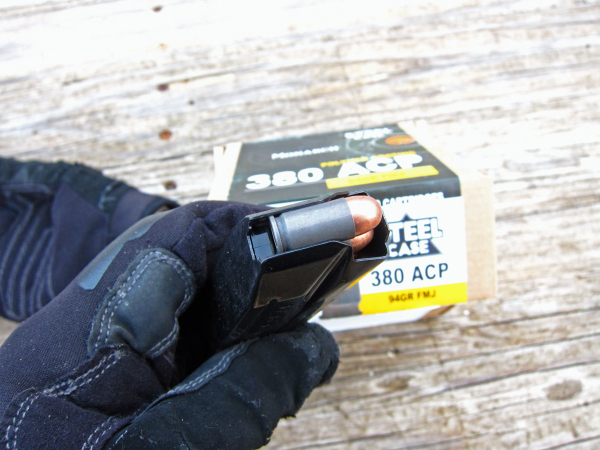
The Security 380 will fire without a magazine in place.
And it did, through fifty rounds of Monarch steel-cased 94gr. ball ammo. I found the accuracy was indifferent; one-hole up close, but wandering left at stand-off distances. First, I shot it with gloves (it was cold), then without. Then I shot it left-handed. It still hit left.
Depending on further results, I’ll mark the slide just outside the right edge of the rear sight with a pencil, then loosen the set screw and drift the rear sight to the right. At my age, changing visual prescriptions, grip or trigger reach likely won’t take before I reach the “SELL BY” date.
I started with a target made from a half sheet of copy paper. Starting at about 20 feet, I shot and walked back until I got to around 45 feet or so before the shots drifted left off the mark. I decided to try a bit of older Cor-Bon 90 grain JHP. A thumping load for a 380, it was easily handled by the Security 380 … and it still struck left.
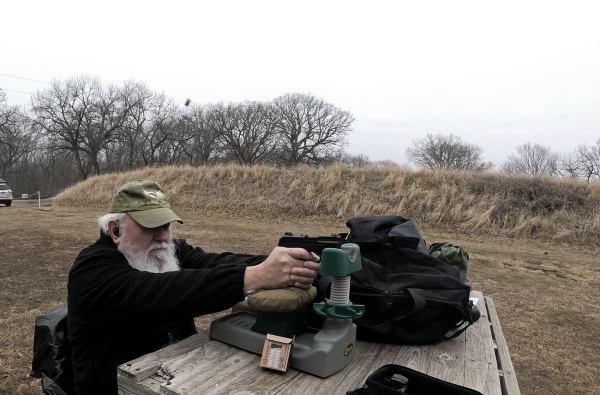
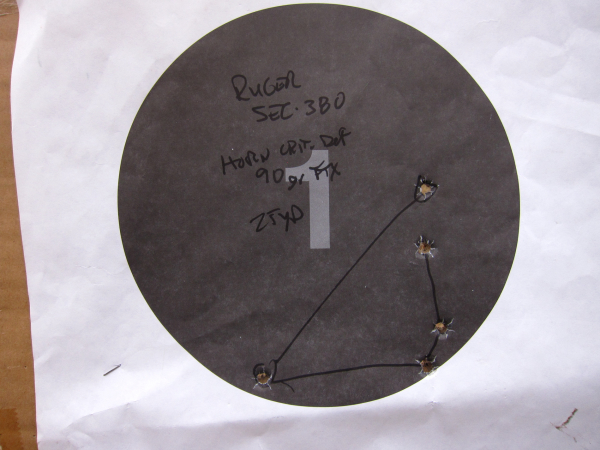
On a subsequent foggy and frigid trip, I shot two loads from seated bench rest -- the 90gr FTX in Hornady’s Critical Defense line and the 94gr FMJ Monarch Steel Case load. The Critical Defense shot into 5”, with the best three rounds going into 2 ¼”. The “best three” tends to indicate what the gun would do without an elderly shooter interfering – in a machine rest. I held half way up the six-inch circle and favored right remembering the gun’s apparent tendency to shoot left.
I hit in the bottom half of the circle, favoring right.
So much for my good ideas …
I centered up under a two-inch dot at the same distance with the Monarch load. It hit considerably left of the dot. Five rounds went into just over 7 ½” with the best three still hitting into 3.5”.
Before someone complains about the accuracy, let’s point out Jeff Quinn’s take on gun testing: he said, and I’m paraphrasing, that his viewers/readers want to know how the gun shoots – not how well he shoots.
While I had a seated rest, there are still issues of vision, trigger manipulation and lack of grip consistency. If we consider the “best three hits of five” group analysis, something I freely admit to pilfering from Massad Ayoob, the low-cost over-sized 380 was going just over two inches for defense ammo and into 3 ½” for range ammo – from 25 yards.
I’m calling it good. This is an interesting gun. If you find yourself teaching new shooters or you have an elderly or infirm acquaintance who’s looking for a defense arm, the Security 380 bears looking into.
-- Rich Grassi